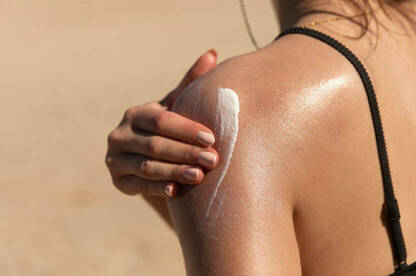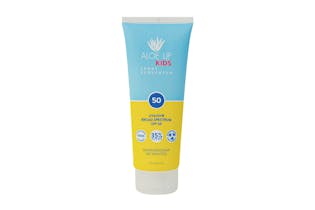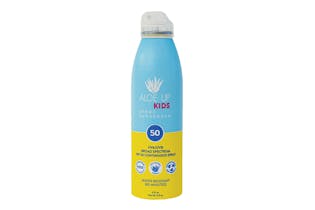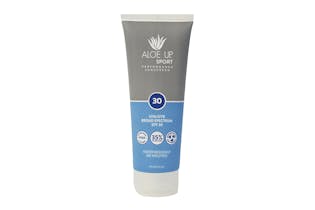Sunscreens: What you need to know to be sun safe
Sunscreen is an important weapon against the harsh summer sun.

The sun exposes you to two types of UV rays – UVA and UVB. Both rays can cause skin cancer. Our sunscreen FAQs tell you what you need to know to keep your whānau sun-safe this summer.

What SPF should I use?
SPF (Sun Protection Factor) is a measure of protection against UVB rays (the ones that cause sunburn). The higher the SPF, the greater the protection. But no sunscreen blocks 100% of UV rays: SPF15 blocks 93% of UVB rays, SPF30 blocks 97% and SPF50 blocks 98%. SPF only measures protection against UVB rays, so using a broad-spectrum sunscreen (that protects against UVA and UVB) is important.
The New Zealand Dermatological Society (NZDSI) recommends broad-spectrum SPF50 or higher for greater protection, for two reasons. Sunscreens with SPF50 or higher offer a safety margin as most people don’t use enough sunscreen and reapply less often than they should.
Also, the UVA protection factor must be at least one-third of the labelled SPF, so a sunscreen with higher SPF means higher UVA protection.
SPF shouldn’t be used as a guide for how long you should stay in the sun. Regardless of SPF, sunscreen should be reapplied every two hours you’re outside and after swimming or sweating.
Are the chemicals in sunscreens safe?
The NZDSI says physical sunscreens (with zinc oxide or titanium dioxide that reflect UV rays) have an excellent safety profile and have not been found to be absorbed, even when used as nanoparticles on normal skin.
But concerns have been raised about chemical ingredients which work by absorbing UV radiation.
In 2019, a study by US Food and Drug Administration (FDA) researchers found some chemicals may be absorbed through the skin at levels higher than previously believed.
In January 2020, a follow-up study by the same researchers on six sunscreen ingredients (avobenzone, oxybenzone, octocrylene, homosalate, octisalate and octinoxate) supported these findings.
The FDA has not said these chemicals are unsafe. However, it has asked the industry to provide additional information on 12 sunscreen ingredients to validate their safety and effectiveness.
The European Commission is also investigating whether some sunscreen chemicals have endocrine-disrupting properties. It has asked for scientific data on 14 chemicals and published scientific opinions on four to date.
It concluded that octocrylene is safe as a UV filter under certain conditions. However, the commission has raised concerns about certain levels of homosalate and oxybenzone (also called benzophenone-3), although notes this evidence is “inconclusive”, and concerns about 4-MBC (4-methylbenzylidene camphor).
Australia’s Therapeutic Goods Administration (TGA) told us it’s currently reviewing the scientific literature to determine the safety of a number of active ingredients used in sunscreens marketed in Australia.
So, is sunscreen still worth it?
“Most definitely,” said NZDSI president Dr Denesh Patel. “UV radiation is the major contributor to skin ageing and skin cancers, and sunscreens are an important part of sun protection. They can be used safely and their benefits far outweigh the small chance of side effects. By covering up more, less sunscreen is required, further reducing any risk of chemical absorption.”
Do children need a special sunscreen?
Sunscreens specially formulated for children have a mild base for sensitive skin. But there’s no reason why kids shouldn’t use the family sunscreen, if it doesn’t irritate their skin. Test a small amount on the inside of their forearm for a few days to check if skin reacts.
Babies younger than six months shouldn’t have sunscreen applied, unless they can’t be protected by shade and clothing. Infants have a thin, less developed skin barrier and are more likely to be irritated by ingredients.
NZDSI recommends physical sunscreens, such as zinc oxide or titanium dioxide, for children. This is because they don’t irritate, they provide excellent broad-spectrum protection and they aren’t absorbed into the body.
Is sunscreen bad for the environment?
Some ingredients – in particular oxybenzone and octinoxate (also called octyl methoxycinnamate) – are emerging as environmental concerns, especially in beach regions where they get washed off.
Due to the evidence showing these ingredients adversely affect marine life, the NZDSI recommends using sunscreens without them. Some countries have already banned these ingredients.
To minimise the amount of sunscreen washing off in our beaches, cover up with UV-protective clothing. Also skip the spray. Aerosols cause sunscreen particles to fall to the sand and then it can be washed into the ocean. The windier the day, the more sunscreen is wasted.
Does using sunscreen lead to vitamin D deficiency?

Our bodies produce vitamin D when we get sun on our skin. How much sun exposure you need depends on different factors such as your skin colour, where you live, how much skin is exposed, the season and time of day, and how much vitamin D you get from food. Good sources include oily fish, eggs and fortified dairy products, but it’s difficult to get enough vitamin D solely from food.
The NZDSI says that usual recreational use of sunscreens doesn’t lead to vitamin D inadequacy. If you have fair skin, it takes less than three minutes of midday summer sun to make enough vitamin D if you’re wearing shorts and a T-shirt (for people with darker skin it takes longer). Being physically active outdoors helps you make more vitamin D than resting in the sun.
Sunscreen is a filter, not a block. This means some vitamin D is produced by sunscreen-protected skin but takes longer. Dr Patel recommends if you may be outside for more than three minutes, apply sunscreen to exposed skin. It’s important you don’t get sunburnt while getting your vitamin D hit.
If you think you’re not getting enough vitamin D, talk to your doctor. Some people with a vitamin D deficiency may need to take a supplement.
Does sunscreen expire?
Yes. Sunscreens shouldn’t be used past their expiry date. Ingredients may separate, affecting the distribution of active ingredients and protection from UV radiation. An expired sunscreen may no longer look, feel or smell the way it did when new.
Some products state an expiry date, others include a production date with an expiry symbol. You may need your reading glasses as some aren’t easy to find or decipher!
If you can’t find a date, sunscreen should last two to three years if stored properly – although if you are using the recommended amounts, you should run out by then. Regardless of the expiry date, store sunscreens out of direct sunlight and other hot places, such as your car’s glovebox.
Aerosol spray or lotion?
Aerosols are quick and easy to apply. But most people don’t use enough – giving a light spray instead of the recommended nine teaspoons for an average-sized adult. And aerosols are expensive – it’s estimated only about 40–60% of an aerosol can is sunscreen and the rest is propellants. Also, these propellants are flammable, which could be a safety issue and it’s easy to waste the sunscreen in the wind.
They may seem like an easier option to use on kids, but there’s the risk of accidentally inhaling the sunscreen. To avoid this, spray on your hands first and then apply. This also helps ensure you get an even layer of coverage and don’t miss patches.
Top sun safety tip
A sunscreen is only one part of your defence against UV radiation and shouldn’t be used on its own. You should also cover up with suitable clothing (preferably UPF50+), a broad-brimmed hat and UV-protective wrap-a-round sunglasses, and seek shade. When the sun’s rays are most intense (between 10am and 4pm from September to April, or when the ultraviolet index – the UVI –3 or higher), limit your time outside.
Our sunscreen test programme
This summer we’ve taken a break from our annual sunscreen testing programme. Sunscreen testing is a lengthy process and with the new regulations coming into place last September, we’ll aim to pick up our test programme for the 2023/24 summer.
We've tested 102 sunscreens.
Find the right one for you.



Member comments
Get access to comment